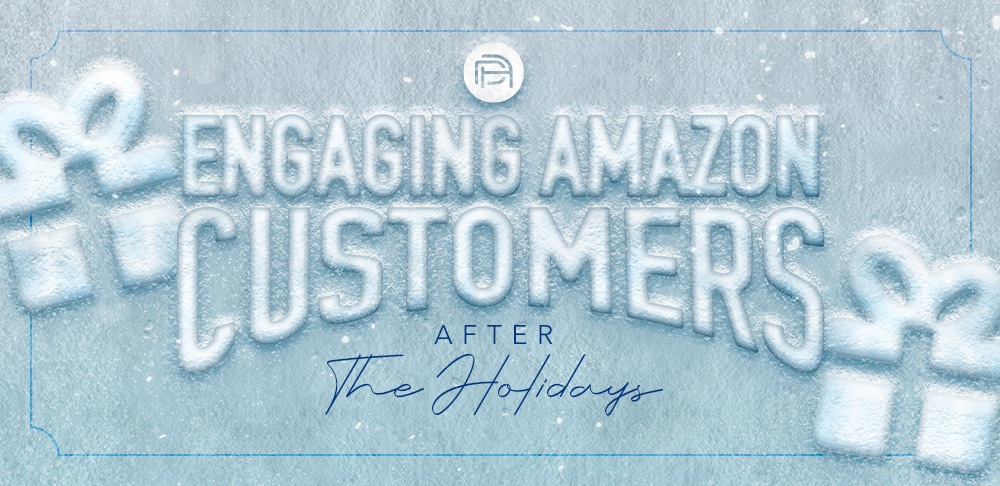2020 has been a year of unprecedented change, and e-commerce shopping on Amazon has been no different. Last week, Amazon revealed that this year’s Cyber Week was its largest in history, surpassing $4.8 billion in sales from Black Friday through Cyber Monday. This +60% increase over last year only reaffirms what is on everyone’s minds: 2020 Q4 will likely be the biggest in history.
The pandemic has reshaped consumer online shopping behavior for the indefinite future. Users are searching for relevant search terms on average 3 weeks earlier than in 2019 for holidays including Father’s Day, Halloween, and Christmas. Naturally, online shopping in general has spiked all year with consumers avoiding shopping in person. This year, Cyber Monday and Black Friday broke records and became the #1 and #2 biggest e-commerce dates in history. Our Holiday Shopping Report provides an in-depth review of these shopping trends.
What does this mean for post-holiday? To help marketers avoid a post-holiday slump, we’ve outlined some ways brands can keep users engaged on Amazon after the holiday season.
- Acknowledge how consumer online shopping behavior has evolved this year: Holiday shoppers are relying on gift cards.
- While customers are still turning online for shopping, a Blackhawk Network survey report found that 52% of consumers are more likely to buy gift cards this year, and consumers are spending about 19% more on gift cards compared to 2019. Direct Agent’s own Amazon Pulse Trends Dashboard has found that search queries for related terms such as “gift card” and “amazon gift cards” are consistently outranking their respective search volume in 2019 throughout Q4.
- Offer creative promotions and discounts.
- Price is king on Amazon. More than 60% of users are now starting their product search on Amazon, and they’re searching for the best deals they can find. Working with Amazon to secure unique bundles, deals of the day, or coupons across top-selling products is an easy way to minimize the post-holiday drop in order volume and keep consumers from turning to competitor brands.
- Split test your on-page content.
- In mid-2020, Amazon began rolling out its A/B Experiment feature, which is partially available in both Seller and Vendor Central. While all sellers and vendors have access to A/B test product titles, A+ Content testing is still in beta and continuing to be rolled out. These updates are groundbreaking, as previously advertisers could only A/B test through third parties. The features are key for quantifying customers’ preference for verbiage, keywords, images, title length, and written content.
- Incorporate cross-selling into your organic and paid advertising strategy
- Whether it be an item someone bought for themselves or something they received as a gift, customers often find they don’t have everything they need after Christmas sales. Brands can use holiday sales data to optimize Amazon storefronts and highlight top sellers. Then, to inspire customers to purchase complementary items connected to their product, brands can incorporate cross-targeting campaigns with top-sellers product detail pages.
- Whether it be an item someone bought for themselves or something they received as a gift, customers often find they don’t have everything they need after Christmas sales. Brands can use holiday sales data to optimize Amazon storefronts and highlight top sellers. Then, to inspire customers to purchase complementary items connected to their product, brands can incorporate cross-targeting campaigns with top-sellers product detail pages.
- Retarget customers who have already viewed your product pages.
- Shoppers who have already demonstrated interest in products are more likely to convert – these users are low-hanging fruit. Last month, Amazon announced that they were rolling out Sponsored Display audience retargeting for U.S. vendors. In this update, advertisers are able to target ‘views remarketing’, which will re-engage audiences who have viewed specific product detail pages but haven’t purchased advertised product(s) in the past 30 days. Additionally, advertising to qualified customers often costs a fraction of the price compared to new audiences. Sponsored Display ads historically have lower costs per click than Sponsored Products or Sponsored Brands due to their placement on a detail page rather than the Amazon SERP. Lastly, Amazon found that brands that coupled Sponsored Display targeting in addition to Sponsored Products or Sponsored Brands experienced +3.2% incremental sales and 3.8X return on ad spend (ROAS).
- Shoppers who have already demonstrated interest in products are more likely to convert – these users are low-hanging fruit. Last month, Amazon announced that they were rolling out Sponsored Display audience retargeting for U.S. vendors. In this update, advertisers are able to target ‘views remarketing’, which will re-engage audiences who have viewed specific product detail pages but haven’t purchased advertised product(s) in the past 30 days. Additionally, advertising to qualified customers often costs a fraction of the price compared to new audiences. Sponsored Display ads historically have lower costs per click than Sponsored Products or Sponsored Brands due to their placement on a detail page rather than the Amazon SERP. Lastly, Amazon found that brands that coupled Sponsored Display targeting in addition to Sponsored Products or Sponsored Brands experienced +3.2% incremental sales and 3.8X return on ad spend (ROAS).
- Conquest your competitors to capture new-to-brand customers.
- While bidding on competitor keywords can be expensive and maybe even cost-prohibitive during the holidays, average bids and subsequent costs per click will see dips as the season becomes less competitive. Then is the opportunity to invest in non-brand targeting to grow the brand to new consumers and gain incremental orders.
- While bidding on competitor keywords can be expensive and maybe even cost-prohibitive during the holidays, average bids and subsequent costs per click will see dips as the season becomes less competitive. Then is the opportunity to invest in non-brand targeting to grow the brand to new consumers and gain incremental orders.
– Allison Eng, Search Associate at Direct Agents
Interested in optimizing your Amazon marketing strategy? If you want to learn more about elevating your organic and paid brand presence, email us at [email protected].

